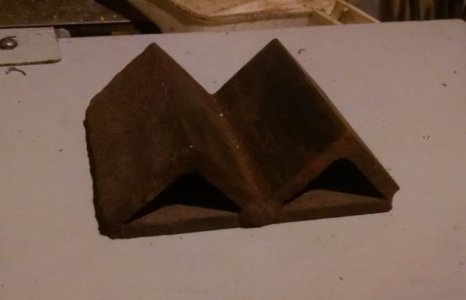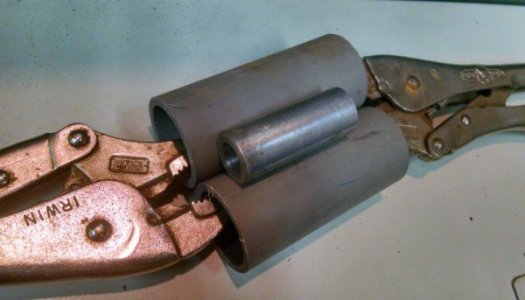Spotting drills are 90 Deg. and designed specifically for spotting drilled holes, why would anyone change to a center drill for spotting holes? Center drills are for creating lathe centers, spotting drills are for starting holes for the twist drill to follow, these are not the same thing.
I am assuming the main drill has a 118 degree point angle here. The starting tip of the center drill is ground at 120 degrees. The spotting/center drill should have a LARGER angle than the drill that follows for it to follow with proper guidance, not walking around as the cutting lips make contact with a 90 degree hole part way out on the cutting lips, which leads to chatter and poor following. The chisel point of the larger drill should be first to contact the work in the starter hole and start cutting, with the cutting lips taking over the job from the center outward, not starting by taking notches from some random points on the cutting lips. In this way the starter hole is truly guiding the drill.
Using the 60 degree main cutting portion of a center drill to make a starting hole for a drill is a really poor idea, even worse than the 90 degree spotting drill, but it is very commonly done. Using the parallel bore caused by the entire tip of the center drill penetrating the work is not quite as bad, but still wrong, and is also sometimes done in error.
Again, the only way a starting drill can facilitate centering of the drill and locating where the drill should follow is for the included angle of the starting/spotting drill to be slightly larger than the drill which will follow. That would mean a 120 degree spotting drill for a 118 degree drill to follow, and a 140 degree spotting drill for a 135 degree drill to follow.
I understand quite well that what I am posting here is not common practice. If you disagree with it, please explain to me why it is wrong.
Specifically, in the case of starting a hole in a curved surface, which is what the OP was trying to do, the center drill is a pretty good choice because it is extremely rigid, has a 120 degree starting angle, and can leave a small, well centered starting hole if pecked lightly and carefully, avoiding the need for milling the curved surface flat first, which would be probably be best for higher precision work. A spotting drill has a larger chisel point and is also less rigid than the center drill is, and is therefore more likely to walk off the curved surface.
Does that make sense? It has worked well for me...



